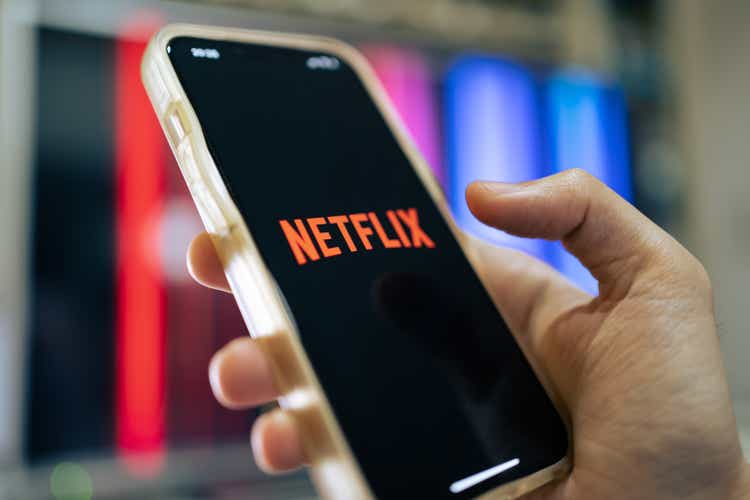Wachiwit
What happened?
Netflix, Inc. (NASDAQ:NFLX) has a clear intention to step into the advertising world as subscriber growth hits a wall. Just when the world was under the impression that the streaming giant may soon ink a deal with either Google (GOOG, GOOGL) or Comcast’s (CMCSA) NBCUniversal to create an ad-supported tier, Netflix announced on 7/14 that it’d be working with Microsoft (MSFT) instead.
All ads served on Netflix will be exclusively available through the Microsoft platform. – Microsoft
It was indeed a surprise to many industry experts, given Microsoft has a rather small exposure to digital advertising with search revenue contributing less than 6% of total revenue. Even if Netflix didn’t like what Google and Comcast could bring to the table, there are plenty of other options including Roku (ROKU), The Trade Desk (TTD), PubMatic (PUBM) and Magnite (MGNI), which all have the right technology in place to help bring Netflix advertising to market quickly.
Why did Netflix choose Microsoft?
Privacy was potentially a reason why Netflix went with Microsoft, but it’s not like Google and others don’t care about privacy. Another reason that makes better sense would be platform neutrality, as Google owns YouTube, Roku owns the Roku Channel, and Comcast’s NBCUniversal owns Peacock. These services compete with Netflix for the same eyeballs.
However, if neutrality was the primary concern, why not go with The Trade Desk, which is the world’s largest independent demand-side platform (DSP) that has a well-established presence in CTV advertising? Microsoft just closed its $1 billion acquisition of ad tech platform Xandr in June, but Xandr is more display focused with a minimal CTV exposure. The same video ads run on Netflix could also be shown on a variety of SVOD/AVOD services from Disney+ to Hulu, so why does Netflix want to become a walled garden by partnering with Microsoft?
Per Needham analyst Laura Martin, Netflix could be looking for an exit, and I cannot agree more.
Both Google and Comcast could potentially face regulatory hurdles if they want to acquire Netflix, especially in Google’s case the digital behemoth is trying to look smaller instead of bigger under intense scrutiny these days. Roku does have a history with Netflix, but a merger between the two would make Netflix investors worse off (here’s why). Pure ad tech players like Trade Desk, PubMatic and Magnite are all too small to scoop up Netflix. Other big names in the streaming space like Amazon (AMZN) and Disney (DIS) could face similar headwinds as they both have competing services. Apple (AAPL) doesn’t make big acquisitions like this. Facebook parent Meta (META) is already betting the farm on the metaverse.
Putting it all together, Microsoft is the only giant that has no business in the streaming space but a lot of cash on the balance sheet. The company is already acquiring Activision Blizzard (ATVI). If the deal is approved by regulators, there’s no reason why Microsoft cannot think about acquiring another content publisher like Netflix. By working with Netflix, Microsoft is officially entering the fast-growing CTV advertising market. Per eMarketer, U.S. CTV ad spend is expected to grow from $19 billion in 2022 to $39 billion in 2026 to account for 10% of all digital ad revenue.
What does this mean for Netflix investors?
An acquisition by Microsoft will certainly be a huge win for Netflix investors, but I won’t bet on it until Microsoft closes the $68.7 billion deal with Activision Blizzard roughly one year from now (June 2023). For now, markets are likely to focus on the fundamentals rather than Netflix’s exit strategy.
Netflix lost 200,000 subscribers in 1Q22 and is expected to lose another 2 million subscribers in 2Q22. Since food and gas prices have soared to unsustainably high levels, the last thing Netflix customers want to see is higher prices when passwords are being shared. If I must put a finger on it, Netflix’s Q2 estimated subscriber loss will likely surprise Wall Street to the downside when the company reports earnings on Tuesday 7/19.
While advertising will certainly help Netflix win back some customers when launched, it’s unclear whether ad revenue will more than offset revenue lost from full-price subscriptions. Moreover, there should be a ceiling as to how much Netflix can charge advertisers as it is not the only streaming name in town.
Per Street estimates, Netflix is expected to deliver revenue of $8 billion in 2Q22 (+9.5% vs. +19% in 2Q21). The consensus EPS estimate calls for a 16% QoQ decline to $2.96 from $3.53 in 1Q22. Out of 44 Wall Street analysts covering the stock, 24 have a hold rating, up from 14 just before the company released Q1 earnings. Evidently, the Street is cautious on Netflix. However, I’m unsure whether investors will be rewarded for buying the fear as Q2 results are unlikely to come in significantly above expectations.
The stock has shown consolidation around current price levels, and valuation has compressed over 70% from 54x NTM earnings in November 2021 to 15x today. Although most of the negatives have been priced in and valuation can now be considered cheap, I’ve learned that cheap and always get cheaper. Until Netflix can demonstrate a viable path to sustainable subscriber growth and above-average profitability, I’d quietly observe the story from the sidelines.


Be the first to comment